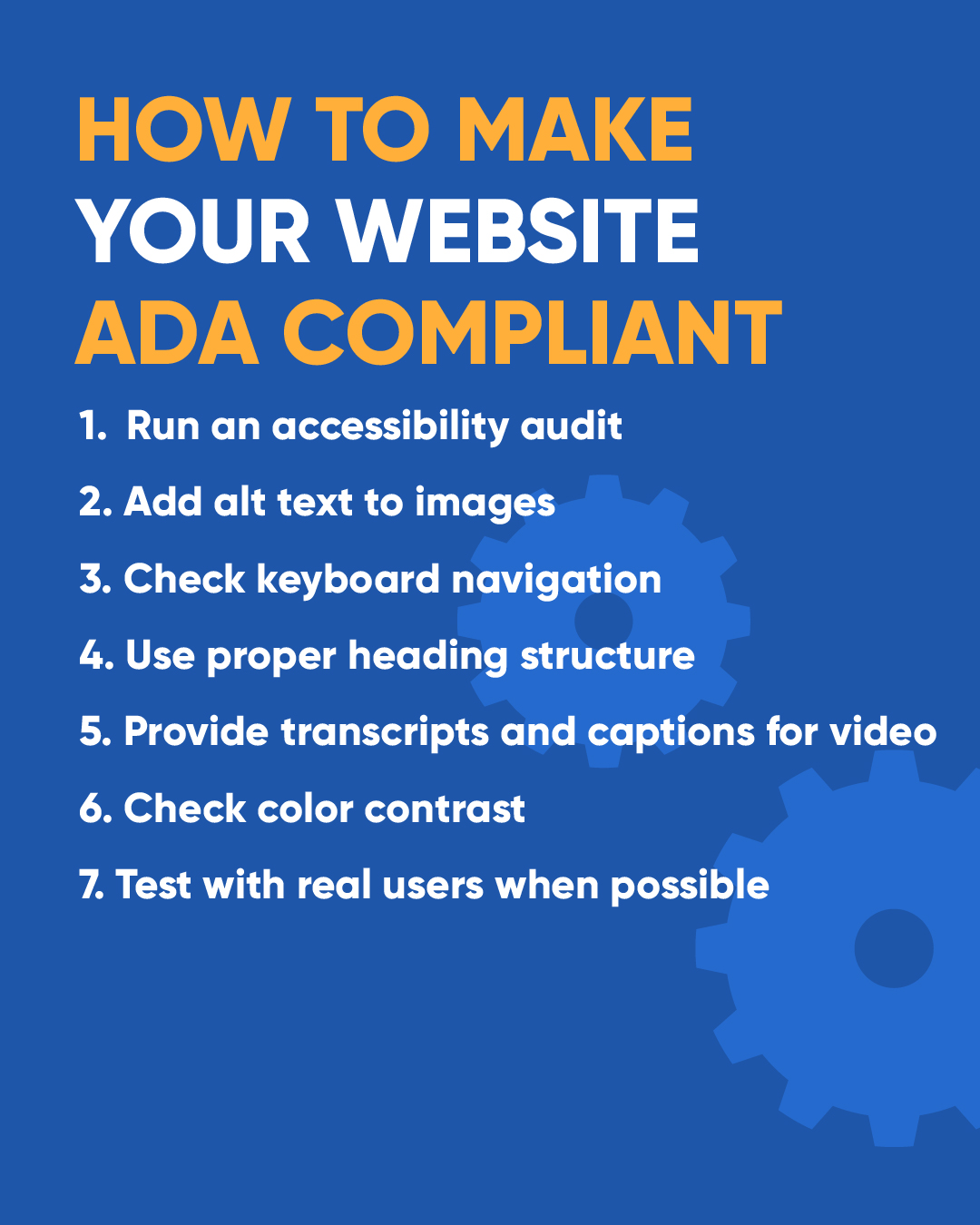Your website works hard for your business. But if it is not accessible to everyone, including people with disabilities, you could be missing out on valuable connections while also risking legal trouble.
ADA compliance is not just about checking a box – it’s about making sure that anyone who visits your website can engage with your content, use your forms, and access your services regardless of their abilities.
Below is everything you need to know about ADA compliance and how to make sure your website is meeting the mark!
ADA compliance means that you are meeting the standards set by the Americans with Disabilities Act. While the ADA was originally written to address physical spaces like buildings and sidewalks, it now also applies to digital spaces, including websites.
A compliant website is one that can be easily navigated and understood by people who may use assistive technologies such as screen readers, alternative keyboards, or voice recognition tools.
The Web Content Accessibility Guidelines (WCAG) provide the framework for what accessible websites should include. These guidelines focus on four main principles: your site should be perceivable, operable, understandable, and robust.
ADA compliance helps ensure that every visitor can engage with your content and navigate your site with ease. It is also a smart business decision that protects you from legal risk and reflects your commitment to equity and inclusion.
Here is why accessibility matters:
More than one in four adults in the United States lives with some form of disability. An accessible site makes it easier for more people to connect with your business.
Features like clear navigation, readable text, and descriptive alt text improve usability for everyone, not just those using assistive technology.
Lawsuits are being filed every day against businesses with websites that fail to meet accessibility standards.
An accessible website sends a clear message that your business values and welcomes every visitor.
There are a few important laws and guidelines that shape what it means for a website to be accessible. While the ADA itself does not spell out specific website rules, these are the standards and regulations that courts and accessibility experts typically reference:

Ensuring your website is accessible is not a one-and-done task, but rather a series of thoughtful steps that create a better experience for all visitors. While achieving full ADA compliance may require the help of a professional, there are several important actions you can take to significantly improve your site’s accessibility.
Here are some of the most effective ways to get started:
Use automated tools along with manual reviews to identify issues that may affect users with disabilities.
Make sure every image on your site includes descriptive text that can be read by screen readers.
Users should be able to navigate your site using only a keyboard without getting stuck.
Organize your content using header tags (H1, H2, H3) in a logical order so screen readers can interpret your content clearly.
Videos should include captions and transcripts to make content accessible to people who are deaf or hard of hearing.
Make sure there is enough contrast between your text and background colors so that content is readable for people with visual impairments.
If you can, involve people who use assistive technologies in your testing process for the most accurate feedback.
At Threshold Media, we help businesses maintain websites that work hard and play nice. Our team can conduct accessibility audits, recommend updates, and handle the technical details so you can stay focused on what you do best. Contact us today to schedule a consultation!
Share this post
Posted in:
Websites
Knock knock!
See what's behind the door to your brand's future.